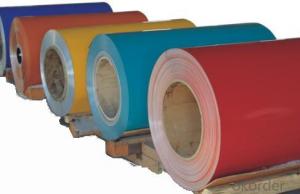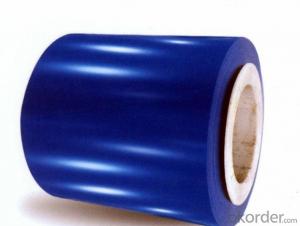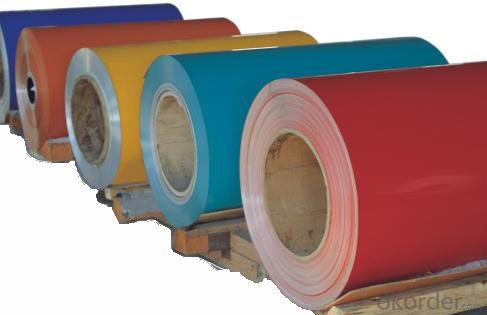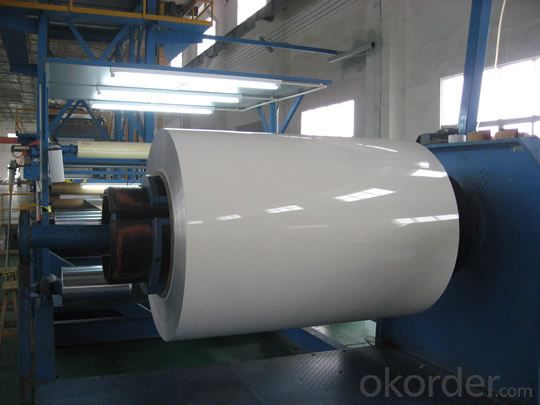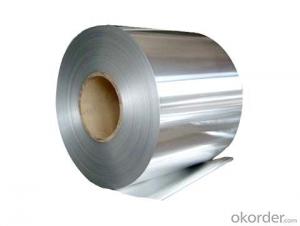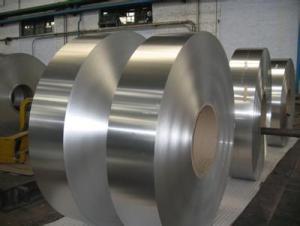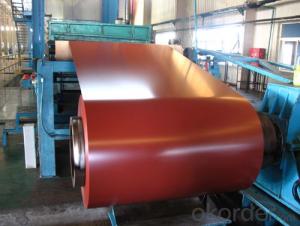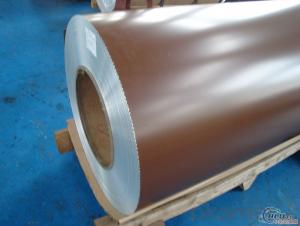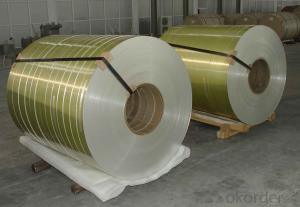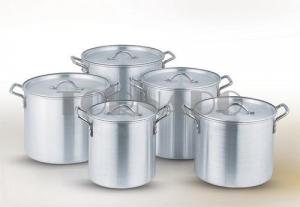Corrugated Aluminum Sheets Price for Polyester Coated Aluminum Coils for Wall Curtain
- Loading Port:
- Shanghai
- Payment Terms:
- TT OR LC
- Min Order Qty:
- 2 m.t.
- Supply Capability:
- 3000 m.t./month
OKorder Service Pledge
OKorder Financial Service
You Might Also Like
Specification
1.Structure of Polyester Coating Aluminium Coils for Wall Curtain
Polyester Coating Aluminium Coils for Wall Curtain are widly used in decoration field. For the painting, it depends on the using evironment. If you use in the open air, we recommend the PVDF coated aluminium coils. This kind of painting can last 15-20 years. If you use in the room, we recommend PE coated aluminium coils. The price is much more competitive.
2. Main features of Polyester Coating Aluminium Coils for Wall Curtain
a.Competitive price---We have our own mills and can produce mill finished aluminium coils, so we can control the production cost better.
b.Professional after-sale service---We have more than 15 years exportation experience and you need not worry about the exporation problems.
c.Fast delivery time---We can control the delivery time within 35 days.
3. Image
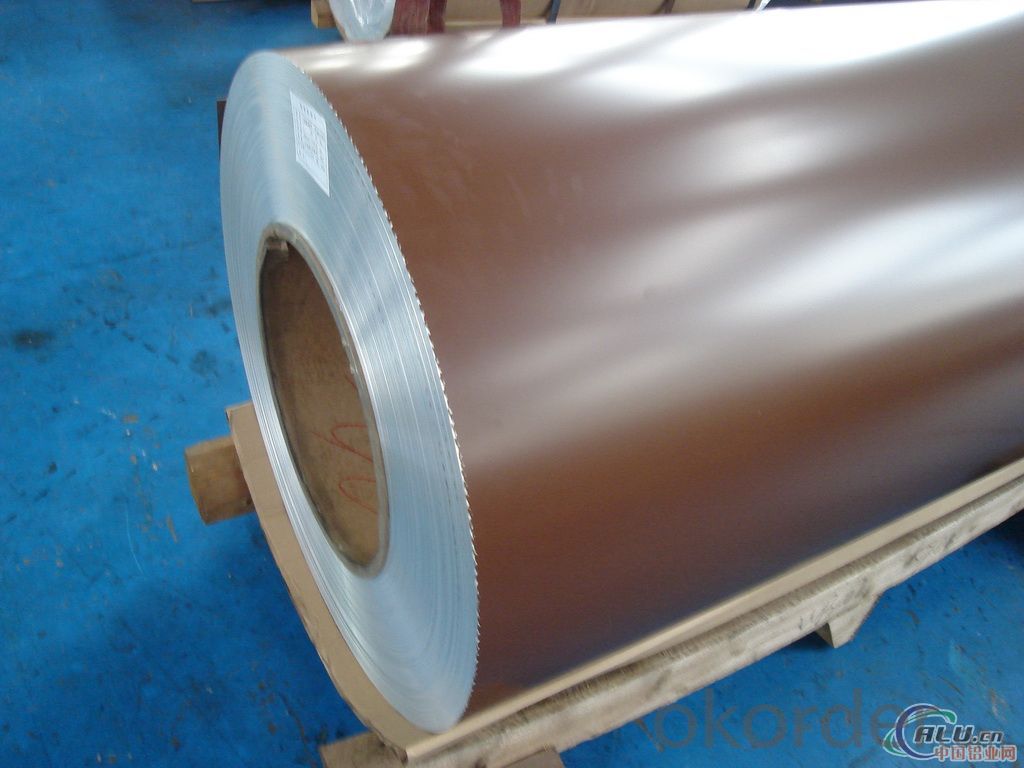
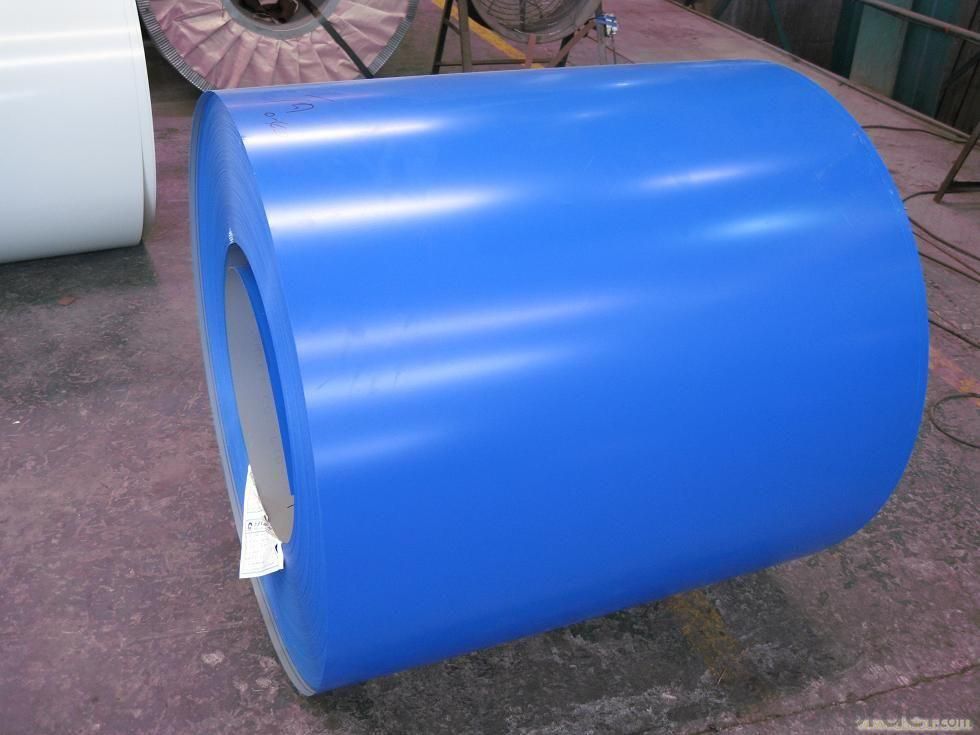
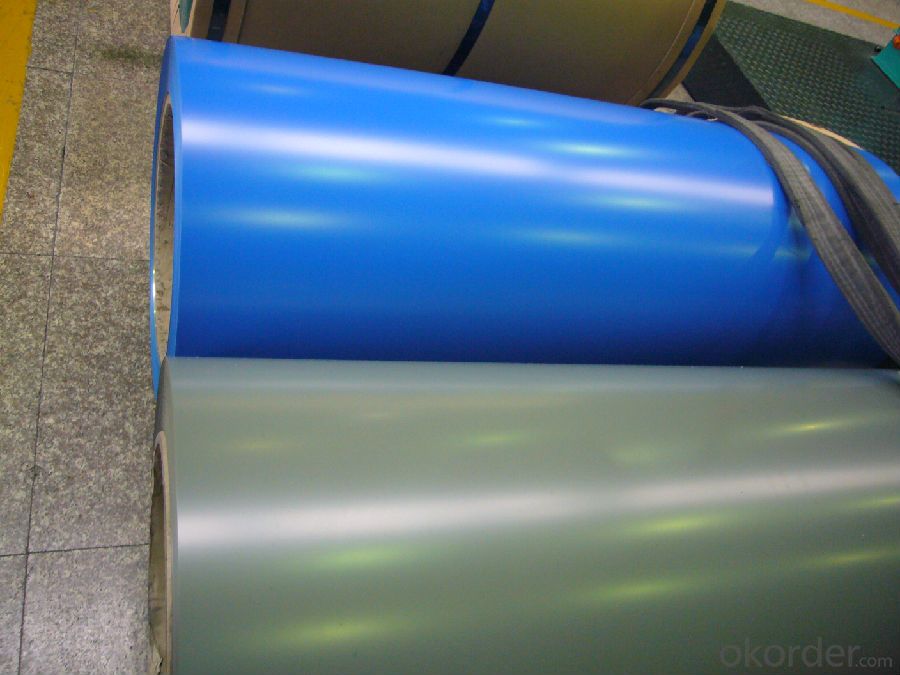
4. Product Specification
| Alloy | Temper | Coating | Coating Thickness | Weight |
| AA1050 | H14 | Polyester | 20-25microns | about 2 TONS |
5.FAQ:
What is the quality standard?
---Usually our standard is GB3880-2006
What is the largest width?
---It is 2300mm
What is the MOQ?
---Usually we can accept 80 tons.
- Q: Is it possible to construct furniture using aluminum sheets?
- <p>Yes, you can use aluminum sheets to make furniture. Aluminum is a lightweight, durable, and corrosion-resistant material that is often used in modern furniture design. It can be easily shaped and welded, making it suitable for a variety of furniture pieces such as tables, chairs, and shelving. However, it's important to consider the design and structural integrity, as well as the finish and comfort, when creating furniture with aluminum. It's also advisable to use appropriate tools and techniques to ensure safety and quality in the construction process.</p>
- Q: I can't seem to find what uses or contains Aluminum Nitride. Help!
- Don't know where you looked, but this came up with very basic web search. Metallization methods are available to allow Aluminium nitride to be used in electronics applications similar to those of alumina and beryllium oxide. Among the applications of Aluminium nitride are opto-electronics, dielectric layers in optical storage media, electronic substrates, chip carriers where high thermal conductivity is essential, military applications, as a crucible to grow crystals of gallium arsenide, steel and semiconductor manufacturing. Epitaxially grown thin film crystalline aluminium nitride is also used for surface acoustic wave sensors (SAW's) deposited on silicon wafers because of the Aluminium nitride's piezoelectric properties. One application is an RF filter used in mobile phones called a thin film bulk acoustic resonator (FBAR). This is a MEMS device that uses aluminium nitride sandwiched between two metal layers.
- Q: does anyone know how much aluminium is recycled per year worldwide compared to how much is produced? Even if you know the stats just for Australia or America it would helpthanksxx
- 45% The fact that they can be recycled to produce more cans means there is no excuse for many people to unaware of aluminum recycling. People should also be aware of the benefits that can occur from it. This has created a strong awareness of the recycling nature of cans and this has been a key factor in the growth of this area. In many canteens, dinner halls and corridors across schools and places of work there is a recycling bin. Wherever people can be found drinking from a soft drink can, a specific aluminum recycling bin can be found for cans to be placed in. Compared to the recycling of many other products, it is easier to find a recycle bin. The provisions for recycling soft drink cans have been more progressively tackled and many people are aware of the need to recycle soft drink cans. This has created awareness and knowledge about recycling and this has moved from school to the outside world. One of the major tactics of marketing departments is to target children and get them to pass the message through to all the family. This is usually done in a bad manner but it can also be done promote recycling. You may see people who go around picking up cans that are thrown away without thought and send them to a recycling center. There are some recycling centers that will make payment for numbers of soft drinks that are recycled. This is a way for people to make some money. It would take a phenomenal amount of aluminum recycling to make a fortune. However, it can help the environment and make a small amount of money back so many people can find the motivation to recycle. There are many places that could be a great source of finding soft drink cans that are thrown away: - School playgrounds - The beach - The car park - Parking lots - Busy streets The amount of products that are available to be recycled continues to grow but it is unlikely that they will grow to be more popular than aluminium recycling.
- Q: Can aluminum sheets be used for HVAC systems?
- Certainly, HVAC systems can utilize aluminum sheets. Aluminum proves to be a favored material for HVAC applications owing to its numerous beneficial characteristics. Its lightweight nature facilitates effortless handling and installation. Moreover, aluminum exhibits remarkable resistance to corrosion, a vital attribute for HVAC systems subject to moisture and fluctuating temperatures. Additionally, aluminum boasts exceptional thermal conductivity, ensuring efficient heat transfer. Consequently, it becomes ideal for heat exchangers and other HVAC system components. In summary, aluminum sheets emerge as a dependable and long-lasting choice for HVAC systems.
- Q: is aluminum foil spacer poisonous after heating?
- many baked food will use aluminum foil.
- Q: What are the acoustic properties of aluminum sheets?
- Aluminum sheets possess several acoustic properties that make them suitable for various applications. Firstly, aluminum is a lightweight material, which means it has a high strength-to-weight ratio. This property allows aluminum sheets to vibrate easily when struck, resulting in good sound transmission. Additionally, aluminum has a low density, which means it can absorb sound energy and reduce noise levels. Moreover, aluminum sheets have excellent corrosion resistance, which ensures their durability and longevity in different environments. This property is particularly important in applications where acoustic performance needs to be maintained over time, such as in construction or automotive industries. Furthermore, aluminum exhibits good thermal conductivity, which allows for efficient heat dissipation. This property is beneficial in applications where heat generated by sound sources needs to be dispersed effectively, preventing any potential damage or degradation of the material. Overall, the acoustic properties of aluminum sheets, including their lightweight nature, sound transmission, noise reduction capabilities, corrosion resistance, and thermal conductivity, make them a versatile and reliable choice for various acoustic applications.
- Q: How do aluminum sheets perform in terms of weldability?
- Aluminum sheets generally have good weldability due to their low melting point and excellent thermal conductivity. Welding aluminum sheets is relatively easy and can be done using various techniques such as TIG (tungsten inert gas) welding, MIG (metal inert gas) welding, or even spot welding. However, there are a few factors that can affect the weldability of aluminum sheets. Firstly, the surface of the aluminum sheet needs to be clean and free from any contaminants such as oil, grease, or oxide layers. These contaminants can negatively impact the quality of the weld. Therefore, proper cleaning and preparation of the surfaces to be welded is crucial. Secondly, aluminum sheets have a high thermal conductivity, which means that heat dissipates quickly. This can make it challenging to control the temperature during the welding process. It is essential to have a skilled and experienced welder who can adjust the welding parameters accordingly to ensure a successful weld. Lastly, aluminum sheets have a high coefficient of thermal expansion, which can lead to distortion or warping during welding. To minimize these issues, techniques such as tack welding or clamping may be employed to hold the sheets in position. In summary, aluminum sheets generally exhibit good weldability due to their low melting point and excellent thermal conductivity. However, proper surface preparation, skilled welding techniques, and careful temperature control are essential to achieve high-quality welds and avoid potential issues like contamination, distortion, or warping.
- Q: What are the different methods for bending aluminum sheets?
- Depending on the desired outcome and available equipment, there are various techniques for bending aluminum sheets. The following are some commonly used methods: 1. Manual Bending: For smaller projects, the aluminum sheet can be manually bent using a manual brake or bending tool. This can be achieved by hand with the assistance of clamps or a simple bending tool. 2. Press Brake: In industrial settings or for larger-scale projects, a press brake machine is utilized. It applies significant force through a punch and die set to create precise and consistent bends. 3. Roll Bending: To achieve long, continuous bends or curves, the aluminum sheet is passed through a series of rollers in the roll bending method. This technique is commonly employed in the production of cylindrical or conical shapes. 4. Rotary Bending: Thin aluminum sheets are effectively bent into curves using rotary bending. This method involves a rotating roller or wheel along the length of the sheet to create smooth and uniform bends. 5. Heat Bending: Thicker aluminum sheets or complex shapes often require heat bending. The sheet is heated to a specific temperature to enhance its malleability before being bent into the desired shape. It is crucial to consider factors such as aluminum thickness and alloy, desired bend angle and radius, and available equipment when choosing the appropriate bending method. Consulting professionals or referring to specific guidelines is recommended for optimal results.
- Q: Are 101 aluminum sheets suitable for medical equipment?
- No, 101 aluminum sheets are not suitable for medical equipment. Medical equipment requires materials that are highly durable, corrosion-resistant, and have excellent biocompatibility. While 101 aluminum is a strong and versatile alloy, it does not possess the necessary characteristics for medical equipment. Instead, medical equipment manufacturers typically use specialized alloys such as stainless steel or titanium, which offer superior strength, resistance to corrosion, and compatibility with the human body. It is essential to prioritize the safety and effectiveness of medical equipment by selecting appropriate materials that meet the specific requirements of the healthcare industry.
- Q: What are the applications of aluminum sheet?
- Aluminum sheets have a wide range of applications due to their unique properties and versatility. Some of the common applications of aluminum sheets include: 1. Construction: Aluminum sheets are widely used in the construction industry for roofing, siding, and cladding purposes. Their lightweight nature makes them easy to handle and install, while their corrosion resistance ensures long-lasting durability. 2. Transportation: Aluminum sheets are extensively used in the automotive industry for manufacturing vehicle bodies, panels, and structural components. Their high strength-to-weight ratio helps reduce the overall weight of vehicles, increasing fuel efficiency and improving performance. 3. Packaging: Aluminum sheets are commonly used in the packaging industry for manufacturing cans, foils, and containers. Aluminum foils are used for food packaging, as they provide a barrier against moisture, light, and oxygen, ensuring the freshness and safety of the packaged products. 4. Electrical: Aluminum sheets are used in the electrical industry for manufacturing power transmission lines, busbars, and electrical enclosures. Their excellent electrical conductivity helps in the efficient transmission of electricity, while their corrosion resistance ensures longevity in outdoor applications. 5. Marine: Aluminum sheets are widely used in the marine industry for manufacturing boat hulls, decks, and superstructures. Their resistance to corrosion from saltwater makes them ideal for marine applications, while their lightweight nature helps reduce the overall weight of the vessel. 6. Aerospace: Aluminum sheets are extensively used in the aerospace industry for manufacturing aircraft and spacecraft components. Their high strength-to-weight ratio and excellent thermal conductivity make them suitable for applications where weight reduction and heat dissipation are critical. 7. Heat exchangers: Aluminum sheets are used in the manufacturing of heat exchangers, such as radiators and condensers. Their high thermal conductivity allows for efficient heat transfer, making them ideal for applications where heat exchange is required. 8. Decorative: Aluminum sheets are commonly used in interior design and architectural applications for decorative purposes. They can be easily shaped, bent, and formed into various designs, adding a modern and aesthetic appeal to buildings and interiors. Overall, aluminum sheets find applications in various industries due to their lightweight nature, corrosion resistance, high strength-to-weight ratio, and excellent thermal conductivity.
Send your message to us
Corrugated Aluminum Sheets Price for Polyester Coated Aluminum Coils for Wall Curtain
- Loading Port:
- Shanghai
- Payment Terms:
- TT OR LC
- Min Order Qty:
- 2 m.t.
- Supply Capability:
- 3000 m.t./month
OKorder Service Pledge
OKorder Financial Service
Similar products
Hot products
Hot Searches
Related keywords
